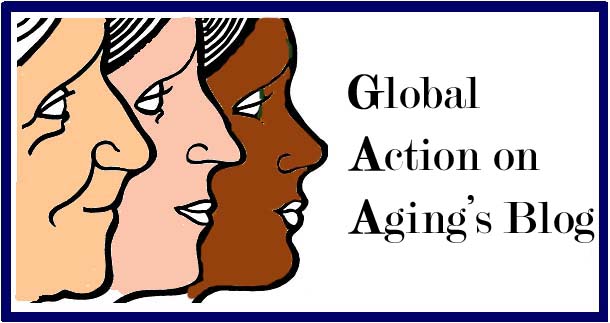Enduring the Storm for Homebound Patients
By JOHN LELAND
New York Times reporter John Leland captures the drama of older people caught in the aftermath of Sandy, the hurricane that hit New York City last Monday and Tuesday.
Nine flights above East 22nd Street, Russell Oberlin, 84, had no heat or electricity, no phone, no elevator service and two cancerous tumors on his right leg that required daily medical attention.
Hiroko Masuike/The New York Times
Suzanne Gilleran, 47, a nurse, visited Russell Oberlin, 84, who was without power in his apartment on East 22nd Street.
As parts of the city edged toward some semblance of normal on Thursday, tens of thousands of people like Mr. Oberlin, who depend on essential home medical care, remained tenuously connected to lifesaving services by agencies like Partners in Care, an affiliate of the Visiting Nurse Service of New York.
At the Visiting Nurse Service of New York alone, more than 5,000 nurses, aides, social workers and others were out serving patients around the city during and after the storm.
Nurses and home aides, who often earn minimum wage or just above it, had to make a decision: go out in the storm or its aftermath, possibly risking their lives and ignoring conditions in their own homes, or make life possible for the patients depending on them.
“I saw six patients yesterday,” said Ms. Gilleran, who trains nurses at Partners in Care, and does not ordinarily make home visits. But because of Hurricane Sandy, the agency pressed all available registered nurses into field duty, as did other agencies around the city, often sending them into conditions made difficult by the weather: the power failures, the lack of public transit, the traffic.
It took Ms. Gilleran three hours on the express bus from Forest Hills, Queens, to get to Mr. Oberlin. Then there were the stairs. The lowest patient “was on the fourth floor,” she said, “the highest was on the 14th.”
“I realized,” she added, “I walked halfway up the Empire State Building, and most of the stairwells were pitch black.”
Allison Chisholm, 46, who works for the Visiting Nurse Service, lives with a frail mother in Park Slope, Brooklyn. When the lights started flickering during the storm on Monday, she had images of her mother falling in the dark. But she also had patients who needed her, including one receiving hospice care in a 12th floor apartment in Chinatown, and one needing an intravenous round of antibiotics in the West Village.
“It was treacherous driving during the hurricane,” said Ms. Chisholm, fitting an intravenous line into the arm of Jill Gerson, 71, who teaches social work at Lehman College in the Bronx. “But it’s just something you have to do as a nurse. That continuity of care helps the healing. I don’t see this as being heroic. I have a conscience. I need to get to sleep at night.”
Dr. Gerson had been hospitalized twice — first as a result of complications from a dental implant, then because of a reaction to her antibiotics. If she missed one day of antibiotics now, she would probably be all right, but two or three days could be life-threatening.
Dr. Gerson, who lives in the West Village, close to the Hudson River, stayed in her home rather than move in with friends, even as the water flowed down her street and into her basement.
“This woman has been saving my life,” she said, pointing to Ms. Chisholm.
Ghislaine Chery, 50, provides home care to patients at two housing projects in the Rockaways; under normal circumstances she travels with a guard. When the storm approached, and the Rockaways were subject to mandatory evacuation, she talked with her clients about leaving.
“After Irene, many of them had had to wait several days for buses to return, and they didn’t want to go through that again,” Ms. Chery said in a telephone interview. So they stayed — blind and in wheelchairs, blind and diabetic — counting on Ms. Chery, who lives on Long Island, to reach them with their medications and other essential services.
“I was here by 7:45 Tuesday morning,” Ms. Chery said. “I’ve been seeing 8 or 10 patients every day. It’s been a real experience.”
As the recovery drags on, a growing need is for mental health care. Scott Feldman, a social worker for the Visting Nurses, answered a call on Wednesday night for volunteers on Staten Island, where he lives. When he arrived at Tottenville High School, which was serving as a temporary shelter and evacuation center, he was directed to a couple in severe distress.
“They’d seen cars coming up their street, not being driven by anyone, just by the flood,” Mr. Feldman said. “They’d lost everything.” Then they tried to help another couple across the street, but had only been able to save the woman, Mr. Feldman said. “The wife was sleeping when I got there. The husband was waking up every hour screaming. So now what do they do?”
At Mr. Oberlin’s apartment, as Ms. Gilleran prepared to leave, taking the trash with her, Mr. Oberlin, who was a well-known countertenor and founding member of the New York Pro Musica Antiqua ensemble, beamed. “I can’t get over this service,” he said. “At the same time, I can see how expensive it must be.”
Dr. Gerson had a different opinion: “This service saves a fortune, because we don’t have to be in hospitals. They don’t pay these people enough.”
Ms. Chisholm waited patiently for the antibiotic drip to finish. She had a long way to go from the West Village back to Park Slope.



This article from the New York Times "The New Old Age Blog" relates very much to your post Susanne.
ReplyDeletehttp://newoldage.blogs.nytimes.com/2012/11/05/old-frail-and-in-harms-way/?ref=health